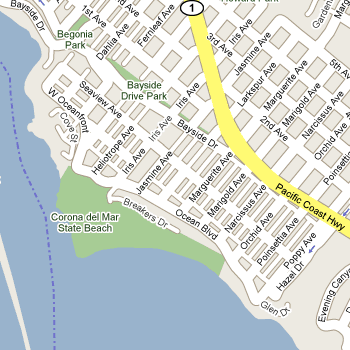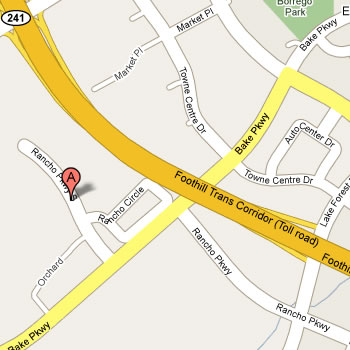NEWBIE NERVOUSNESS
Ron Saetermoe
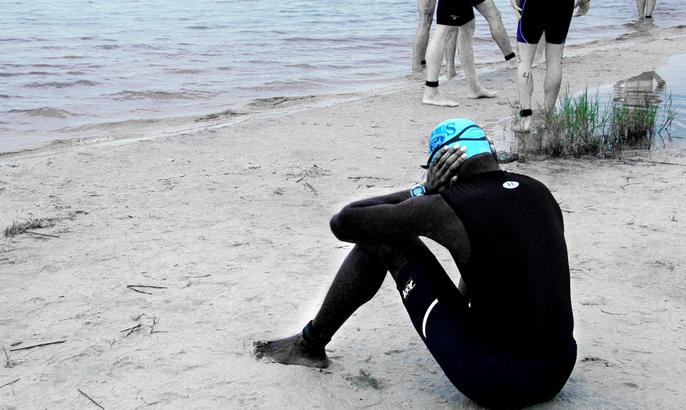
The terror on the “newbie’s” face is humorous. That’s because the terror is on someone else’s face, not mine.
Many new triathletes (newbies) seem to have come to the sport in similar ways – one of their “friends” coaxed them into it. That’s how I started, and to this day I can’t thank Greg Fitts enough for the encouragement.
The problem is that most come to the sport ill prepared. Sure, there are coaches and triathlon clubs out there, and great organizations like Team in Training, but most new triathletes enter the sport without a lot of guidance.
Granted, the vast majority of newbies just want to survive their first race, but secretly I think they also want to feel good about their performance. That’s where a good coach comes in. A good coach will help get you physically and mentally ready for your big race.
Triathlon is very simple, but very complex at the same time. I mean, who would think it would be so darn hard to put on your singlet when you’re wet? Some day I’m going to shoot video in the transition area of a race and put together a “Funniest Transitions” video. It is hilarious.
Triathlon is simple because all you have to do is swim, cycle and run. Even the most unfit amongst us can “complete” a triathlon, whether they believe it or not. However, getting beyond just surviving takes much more.
Here are a couple tips:
1. Get a coach: Of course I’m going to say that, right?
2. Read: There are a ton of books and magazines out there. Triathlete magazine and Competitor magazine have great articles for the newbie. www.beginnertriathlete.com is another great resource. I also like the Wes Hobson book called Swim Bike Run.
3. Get a plan: If you just go out and swim, bike and run without a plan you’ll never reach your full potential. I’ve posted my “ideal” workout week here before and I really try to stick with it.
4. Measure your performance: Periodically do “marker sets” which is a particular workout you do at different times of your season to see how much you’ve improved (more in this newsletter).
We’ll be starting a newbie triathlon camp here soon so stay tuned for more information on that.
Cheers!
FREE GROUP WORKOUTS (Week of September 28th)
All of our group workouts are free to members and non-members, so come on out!
We want everyone to enjoy our group workouts but we should clarify the intent. The intent of the group workouts is to “workout.” Yes, it includes a social element. Yes, your Triathica host is happy to give you tips. But please be aware that everyone there is attempting to get a workout in at his or her own pace. If we all go at the slowest person’s pace many people won’t be getting in a proper workout. We will attempt to pair you up with another athlete so you’re not left alone.
Week of September 28th
Event: Group Swim
Place: Triathica flag at Big Corona near the lifeguard station next to the jetty
Day: Wednesday, September 30rd
Time: 5:30 p.m.
Planned Workout: 1 – 3 loops around the buoys
Event: Group Ride
Place: Triathica HQ
Day: Saturday, October 3rd
Time: 7:00 a.m. (back to the regular time)
Planned Workout: 1- 3 loops of the Canyon
Event: Group Run
Place: Triathica HQ
Day: Sunday, October 4th
Time: 7:00 a.m.
Planned Workout: 9 miles in Whiting Ranch
PETE AND CORRINNE UPDATE #13
Jarrett Pflieger
The week leading up to the OC Tri was not a typical training week for Corrinne, it was mostly a lot of rest. She was able to get a massage on Monday and a chiro adjustment on Tuesday. She and Pete were also able to attend the Triathica course talk on Tuesday night, which they agreed, “provided key race insight.”
Pete was also able to taper the last week and take it easy, besides an unexpected 10-mile hike on Wednesday through the local mountains, searching for a lost trail runner, Gina. “After being out there with 100 plus degree temperatures for three plus hours, I was pretty cooked,” said Corrinne. She did replenish her lost fluids, but still felt a bit tired. She hoped that a few days of active rest would have her ready by race time.
I saw both Pete and Corrinne at transition on Sunday morning. They seemed excited and anxious to start, but not really nervous at all. It must be the ultra-runner in them.
Corrinne’s wave went off second and Pete’s was 5th. The water was too warm for wetsuits, so they both decided to go without them. For Corrinne, the swim was much longer than she thought. “I usually breathe every four strokes, but I was so pumped up from andrenaline and all the thrashing going on around me that I had to breathe every other stroke.” She planned on staying to the left to avoid congestion around the first right turn bouy, but apparently, so did everyone else. She was scared about re-injuring her broken wrist, so she finally found some clear water right in the middle of the swim course, of all places, and was able to settle down and get into a nice pace.
She finished the swim then unfortunately had some problems on the bike. She felt some rubbing going on in the back wheel area, and thought she might have a flat or some brakes rubbing. She got off the bike at one point to check, and the brakes were rubbing a bit on the rim. She was unable to adjust them out on the course and had to push through the extra resistance caused by the brake. Because of that, she believes her run suffered. “While I was riding I somehow pulled my groin muscle. The combination of the pulled groin and the exhausted legs didn’t lead to my best run,” she said.
Pete was also a bit dissappointed in his run time, but I think a lot of people were disappointed in their run on Sunday. It got hot pretty fast and it is a very hilly course. “Both Corrinne and I have run and biked the course many times before the race and I know we could have easily done better. I think it was just a combination of several small things that led to a disappointing performance. There is always next race,” Pete explained.
Overall, Pete and Corrinne both had a blast and are looking foward to their next triathlon. The most important thing is that they finished and had fun while doing it.
Results: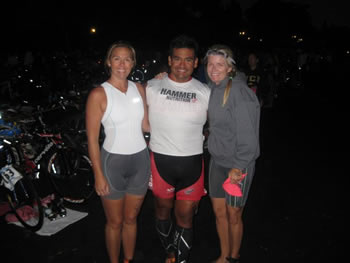
Pete – 2:48:03
Corrinne – 3:14:08
INDOOR CYCLING: THREE THINGS YOU NEED TO KNOW
Jarrett Pflieger
I like training outside, especially on the bike. I like scenery, I like the wind rushing against my face, and I like going fast. Although I enjoy the feeling of being outdoors, I’ve noticed my workouts are not nearly as effective as when I train indoors on a CompuTrainer or a spin bike with a power meter. A one-hour ride indoors for me is comparable to two to three hours riding outside.
Training outside can be fun and there is definitely a need for it in any good training plan, but those that train exclusively outdoors are missing out on opportunities to increase their cycling performance. When you ride outside, there are many variables that can keep you from having an optimal workout. It’s also very easy to not push yourself as hard as you should for maximum performance gains.
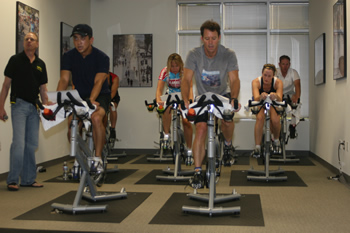 So what is so beneficial about indoor training anyway?
So what is so beneficial about indoor training anyway?
1. Controlled environment
Indoor training allows a rider to control their surroundings. No extreme temperatures, cars, wind, flat tires, and stoplights means you can get a great workout in, every time. It’s also a lot safer.
You can buy or create workouts with sets and intervals that work on specific parts of your cycling repertoire, such as endurance, speed, or power. Since your environment is always the same, it is very easy to track your workouts week-to-week and see if you are getting better, and if so, in what areas. It is very difficult to do a structured workout outdoors with constantly changing terrain. Even comparing your times on the exact same bike route can be skewed by changes in weather, stoplight sequences, flats, wind etc. Just like track workouts for running, indoor cycling sessions are an important part of any athletes training plan.
2. Save time
Training indoors is more intense than riding outside since there are no distractions. It is just you and your bike; so you can really focus on your pedaling efficiency, power production (if you have a power meter), and exertion levels. Riding outdoors usually involves frequent stopping for lights, cars, and many will take it easy on the down hills. Indoor training eliminates this and ensures you get the best workout you can in the shortest time possible.
3. Get better, faster
What would happen if every time a body builder went to the gym, he didn’t really have a plan besides knowing he would lift for about an hour? Would he get stronger and bigger over time? Of course. Could he get bigger and stronger in less time if he had more structure? Absolutely. Obviously the goal here is not to get bigger, but it is to get stronger, faster, and more efficient.
All the time I hear people say, “I have to go ride fill in the blank miles today.” Don’t get me wrong, you do need to make sure you get enough miles in to get your body used to the distance, but people rely on “the miles” too much. Just because someone goes out and rides 60-miles doesn’t mean they got a great workout. It is very possible to have a five- to ten-mile workout that is much more intense and benefits the athlete more than a long and slow 60-miler. As with most things, quality is better than quantity.
Training indoors allows the athlete to have structure and really focus on what they want to accomplish. It may get a little boring, but there are ways around that. Crank up some music on your stereo or MP3 player. Don’t like training alone? Take a spin class. If you hate staring at the wall, look into a CompuTrainer or get some quality cycling DVDs that can guide you through a workout. Keep training only outdoors if you are just doing it for fun. If you really want to be a better cyclist, consider adding a healthy dose of indoor training to your training schedule. What better time to train indoors than the winter off-season?
INTRODUCING THE TRIATHICA ACADEMY
Ron Saetermoe
The best part of being a coach (at anything I guess) is the satisfaction you get when you can see your student’s performance improve. Since we started Triathica in June, I’ve had the privilege of helping a number of athletes in their triathlon endeavors. Their feedback means a great deal to me.
In October we’re starting a new division here at Triathica called the “Triathica Academy” which is the arm that will focus on athletic performance improvement. Simply put, all of our personal training, camps, clinics, classes and multi-media will be under this umbrella.
We’ll be introducing the Triathica Academy to Orange County, and the world via the internet and local media. Look for our advertisement in the November issue of Competitor Magazine.
Eventually, the Triathica Academy will include a membership of its own. Current Triathica club members will be able to add an Academy membership to their basic membership for a small additional fee. “Remote” customers will also be able to join the academy without having a club membership.
Our first Academy offerings will be an exercise DVD and a camp for triathlon newbies.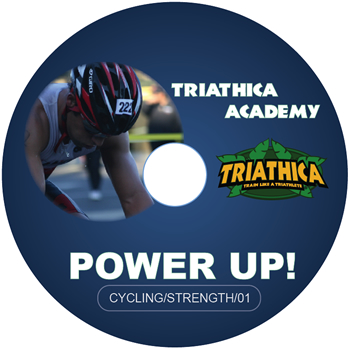
We shot the DVD several months ago and have recently just finished editing it. It’s a spin workout that can be done on a stationary bike, trainer or CompuTrainer. We call it “Power Up!” because it’s a cycling power workout. We break all of our workouts here at Triathica into one of four types: power, endurance, speed or recovery.
Power Up! is a 60-minute workout designed to help build your leg strength to climb hills and power through the wind. We keep increasing the watts in this workout while decreasing the cadence. It’s a real quad buster!
Watch for more information of this great training tool.
The newbie camp will be a comprehensive triathlon training session conducted over a weekend for those athletes that have never raced before or feel like they need to develop some additional basic skills.
Again, watch for more information on this exciting camp.
MY SWIM WORKOUT
Ron Saetermoe
Let me start by saying that I’m not a great swimmer, but I am good. I’m good because I started swimming competitively when I was seven years old and continued to do so until I got sideways with my high school swim coach when I was 17.
When I got to college I thought it would be cool to try out for the swim team. I went to one of their practices just to check it out and realized they were waaaaay beyond my abilities so I just continued to swim for exercise and fun.
When I took up triathlon in 1983 I realized I didn’t have to be a great swimmer but it sure did help being good. In recent years I’ve developed a system that works for me, and it may work for you too.
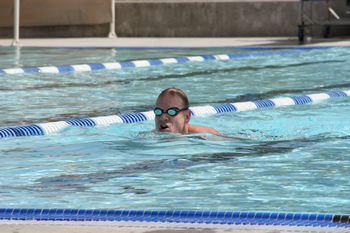 Now I don’t want to get sideways with all of the masters swim programs, but I probably will anyway. In my opinion, masters swim programs aren’t teaching you how to be a good triathlon swimmer. After all, how many times do we swim 100 yards, then stop? Hopefully never.
Now I don’t want to get sideways with all of the masters swim programs, but I probably will anyway. In my opinion, masters swim programs aren’t teaching you how to be a good triathlon swimmer. After all, how many times do we swim 100 yards, then stop? Hopefully never.
Because of my cramped schedule and because I think long, continuous swimming is more beneficial for triathletes, I have developed the “Triathica Swimming System.”
Essentially, each workout includes long sets with very few rests . . . more congruent with triathlon racing. Each set includes easy to moderate efforts with bursts of speed. Here is my typical training program leading up to Ironman distance:
Adaptation phase: 3,000 yards as 200 moderate + 50 hard x 4 (no stopping between)
Repeat this three times with one-minute rest between
Base phase: 3,000 yards as 150 moderate + 100 hard x 4 (no stopping between)
Repeat this three times with one-minute rest between
Build phase: 3,000 yards as 100 moderate + 150 hard x 4 (no stopping between)
Repeat this three times with one-minute rest between
Race phase: 3,000 yards as 50 moderate + 200 hard x 4 (no stopping between)
Repeat this three times with one-minute rest between
You can see, as I near my race I begin to increase the “hard” yards which helps me build for my race. When my season ends I reduce my total yards as well as my hard yards. Give it a try sometime and let me know if it works for you.
Cheers!
SWIM CLINIC WITH TRISWIMCOACH
We invited Tri Swim Coach Kevin Koskella to organize a swim clinic at Triathica training center in Orange County, CA to do stroke analysis for some of our triathletes.
They were everything from beginner level to competitive, one of the participants, Julia was going to the world championships in Gold Coast, Australia in 2 weeks! (She went to the world championship and placed 3rd in her age group.)
We used the Endless Pool and were able to compare their underwater videos with what it should look like, and create DVDs for everyone to keep. They asked lots of great questions, and overall it was a fun and educational time.
Please check back to learn more about the next swim clinic.
FREE GROUP WORKOUTS (Week of September 21st)
All of our group workouts are free to members and non-members, so come on out!
We want everyone to enjoy our group workouts but we should clarify the intent. The intent of the group workouts is to “workout.” Yes, it includes a social element. Yes, your Triathica host is happy to give you tips. But please be aware that everyone there is attempting to get a workout in at his or her own pace. If we all go at the slowest person’s pace many people won’t be getting in a proper workout. We will attempt to pair you up with another athlete so you’re not left alone.
Week of September 21st
Event: Group Swim
Place: Triathica flag at Big Corona near the lifeguard station next to the jetty
Day: Wednesday, September 23rd
Time: 5:30 p.m.
Planned Workout: 1 – 3 loops around the buoys
Event: Group Ride
Place: Triathica HQ
Day: Saturday, September 26th
Time: NO GROUP RIDE THIS WEEK! (OC Triathlon)
Planned Workout: NO GROUP RIDE THIS WEEK!
Event: Group Run
Place: Triathica HQ
Day: Sunday, September 20th
Time: NO GROUP RUN THIS WEEK! (OC Triathlon)
Planned Workout: NO GROUP RUN THIS WEEK! (OC Triathlon)
PETE AND CORRINNE UPDATE #12
Jarrett Pflieger
The OC International Triathlon is looming, but Pete and Corrinne believe they’re ready. 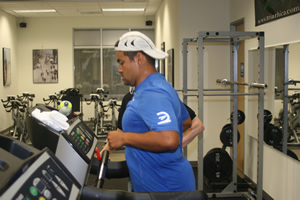 If you have been following Pete and Corrinne on their journey to the OC Tri, you know they have come a long way since they started training like triathletes at Triathica. This is the final week leading up to their race, we know they will do great.
If you have been following Pete and Corrinne on their journey to the OC Tri, you know they have come a long way since they started training like triathletes at Triathica. This is the final week leading up to their race, we know they will do great.
Pete had a great week. “I feel that training program that Triathica has put together has really helped me get to this point. I was able to go out to the lake again this week for a practice swim,” he said. Pete also had the chance to practice swimming in Lake Mission Viejo with the Triathica group, sans wetsuit. “I feel with the warm weather, we will not have the ability to wear wetsuits at the race,” he revealed. Last week he said he needed to work on his speed a little bit. This week he did few tempo road runs and his legs felt pretty good. He is going to try to take it easy this week and is “looking forward to a few chiro adjustments, a good massage, and plenty of rest.”
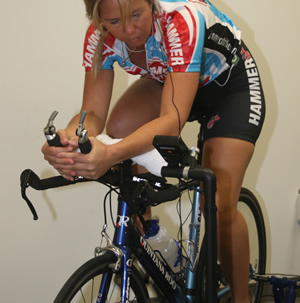 Corrinne also had a great week. She has been training a lot on the indoor CompuTrainers here at Triathica because of her broken wrist. It is close to 100% so this past week she was finally able to go outside and ride. “Saturday I thought I would try to keep it a pretty easy ride with not a lot of hills. I didn’t really want to be gripping with my hand and wrist,” she said. She wore her brace and went down Shady Canyon, around Back Bay, and back. She followed that ride up with a short run. “At first, I was super nervous and my confidence was shot,” she explained, “It was like I was on my bike for the very first time again.”
Corrinne also had a great week. She has been training a lot on the indoor CompuTrainers here at Triathica because of her broken wrist. It is close to 100% so this past week she was finally able to go outside and ride. “Saturday I thought I would try to keep it a pretty easy ride with not a lot of hills. I didn’t really want to be gripping with my hand and wrist,” she said. She wore her brace and went down Shady Canyon, around Back Bay, and back. She followed that ride up with a short run. “At first, I was super nervous and my confidence was shot,” she explained, “It was like I was on my bike for the very first time again.”
She was thinking the ride might not go well at first, but about 10 minutes into the ride, she felt like she had never fallen. Things came back very quickly to say the least. Corrinne attributes her maintenance of fitness on the bike to the six weeks spent in the CompuTrainer room. She was spinning faster than ever before and was sure she was pushing out more watts. “ I think we were going a good 18-23 mph the whole time, which for me is great, and I wasn’t pushing it too hard. It felt soooo good,” she said.
One thing Corrinne is trying to work on this week is getting better sleep. Between kids starting school, football games three days a week, practice every night, and running the snack bar for the high school, she struggles finding the time to get a solid nights sleep. She estimates she gets around four hours a night. Sleep is very important leading up to a race, so hopefully she can find the time to get some much needed rest.
That’s is for Pete and Corrinne this week. Check back next week to see how they did at the OC Tri and where they are going from here.
CAFFEINE AND ENDURANCE SPORTS: IS THE HYPE FOR REAL?
Alyson Wolfe
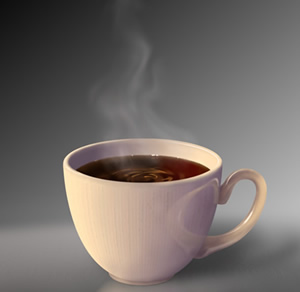 Endurance athletes and sleepy early morning risers have used caffeine for years. Athletes and office workers alike have used it as a way to stay alert and improve endurance. For more than 30 years it has been studied in relation to its performance enhancing ablilities and has only recently been removed from the banned substance list of the International Association of Athletics Federations (IAAF) earlier this year.
Endurance athletes and sleepy early morning risers have used caffeine for years. Athletes and office workers alike have used it as a way to stay alert and improve endurance. For more than 30 years it has been studied in relation to its performance enhancing ablilities and has only recently been removed from the banned substance list of the International Association of Athletics Federations (IAAF) earlier this year.
It is one of the best-researched nutritional supplements, and the overwhelming scientific evidence suggests that, in moderation, it has very few to no adverse health effects. When abused, it can cause annoying little problems such as increased urination, stomach upset, headaches and trouble sleeping. Athletes who normally avoid caffeine may experience adverse effects if they start using it as an ergogenic aid without first determining how it will affect them.
The overwhelming majority of athletes use caffeine as a performance-enhancing supplement with very few problems. Many studies have looked at the effects of caffeine on exercise and found that caffeine can delay fatigue and help increase energy levels, increase alertness and even decrease muscle pain. All these positive effects lead to workouts that are more productive, longer and often more enjoyable to the athlete. One technical reason for this is due to the effect caffeine has on the increased stimulation of the central nervous system.
The recommended dose to help enhance endurance workouts is about 6 mg per kg of body weight. The scientific literature also suggests that the risk of negitive side effects is increased if caffeine is taken in doses higher than 9 mg per kg of body weight. Caffeine is found naturally in coffee beans, tea leaves, chocolate, cocoa beans and cola nuts, and is often added to carbonated drinks. The average cup of coffee has about 60 mg to 120 mg, so it doesn’t take a whole pot of coffee to do the job.
Caffeine can be absorbed by the body very fast, with peak concentration reached in around one hour. The half-life of caffeine, the time required for the body to eliminate one-half of the total amount of caffeine, varies widely among individuals. Depending on factors such as age, liver function, pregnancy, and some medications, caffeine’s half-life is approximately five hours in healthy athletic adults. Women who take oral contraceptives can increase this time to 5–10 hours, and in pregnant women the half-life is roughly 9–11 hours. Therefore, in order to find your individual optimal time to take caffeine, it may take some experimenting.
Athletes engaged in heavy endurance training often seek additional nutritional strategies to help maximize performance, however as with any intervention or use of supplementation, individual responses will vary. Athletes should monitor their caffeine dosage strategy before putting it to the test in a competion. Caffeine can be a benefit to you in a race but does not replace a sound everyday diet.


